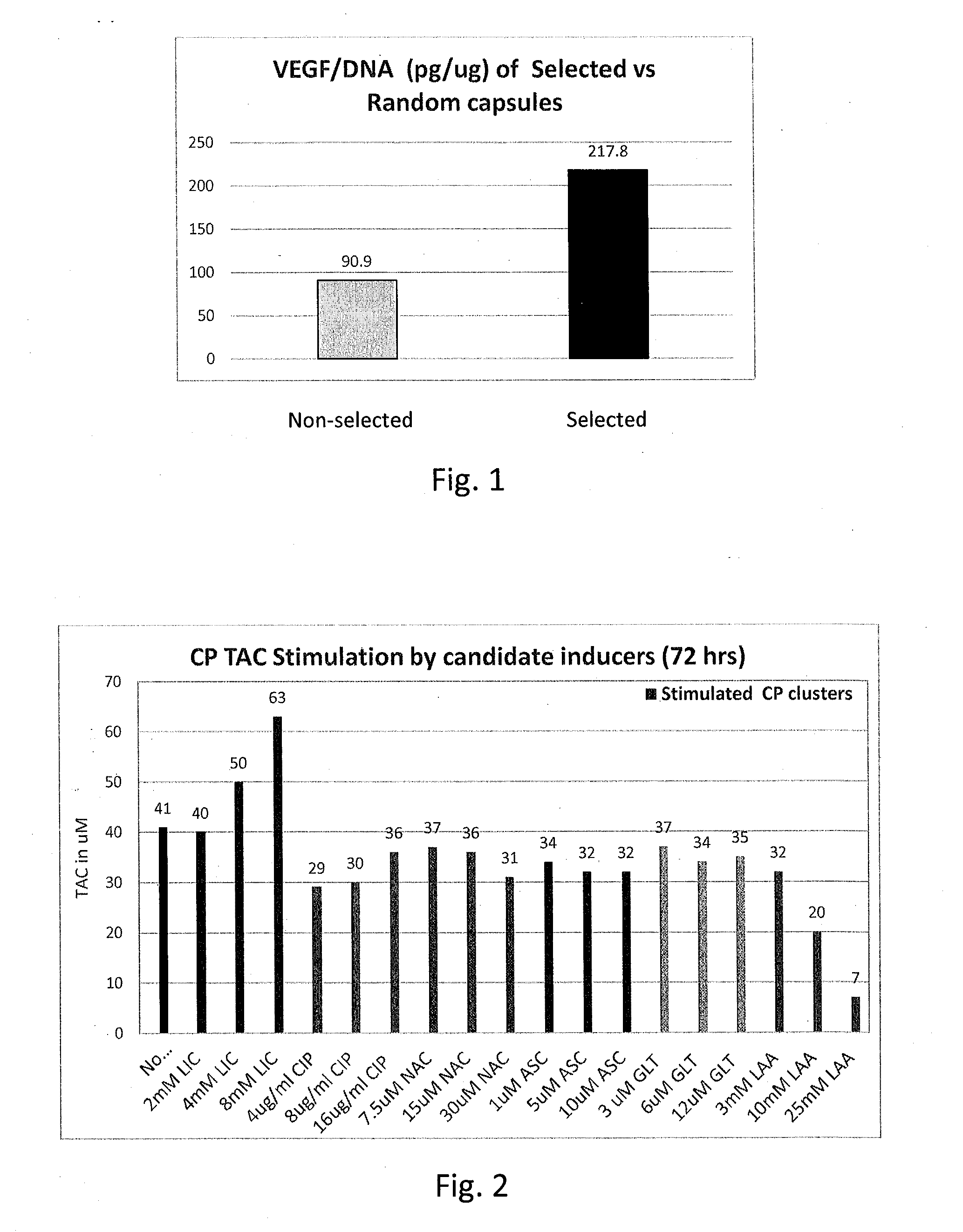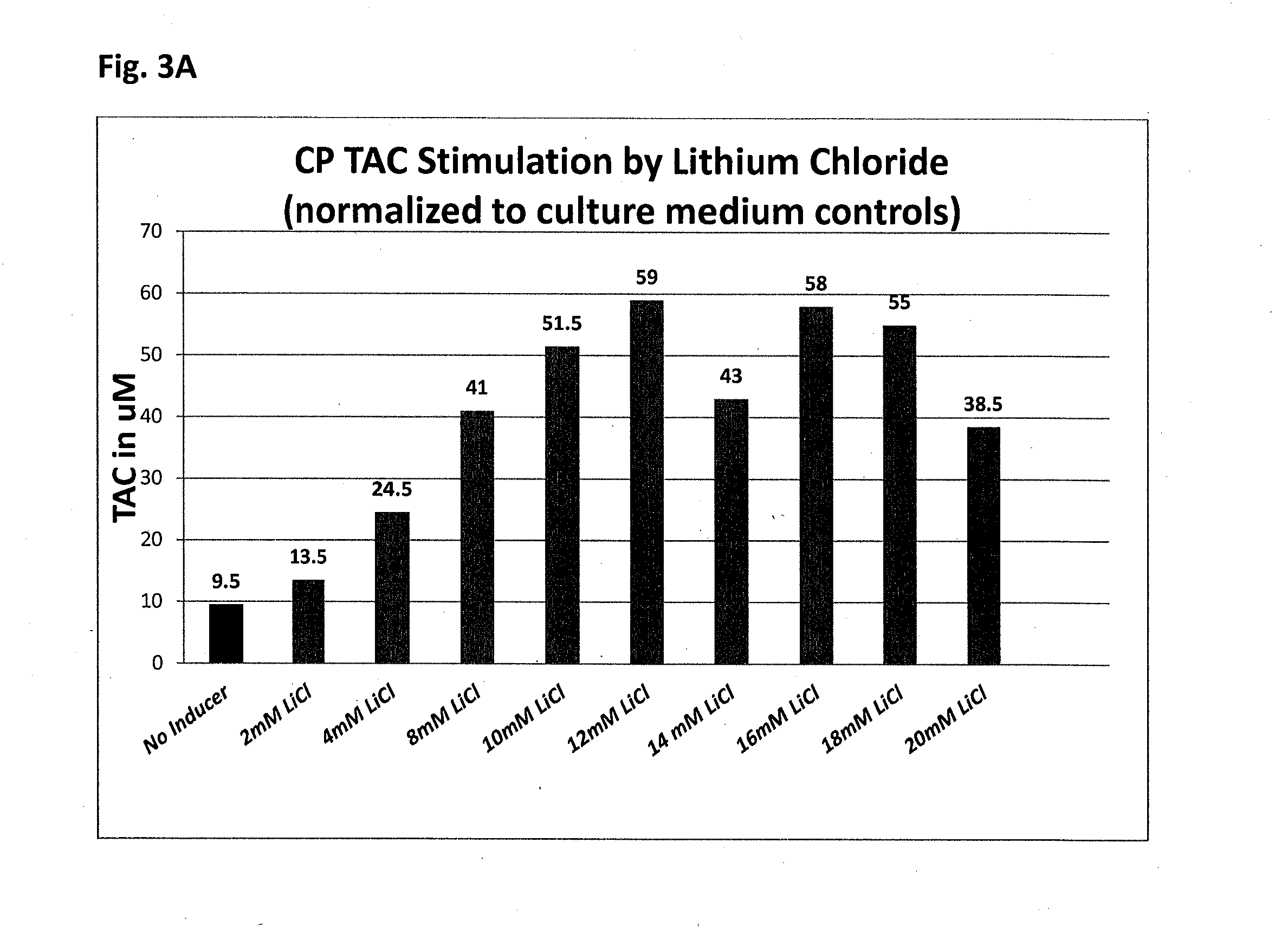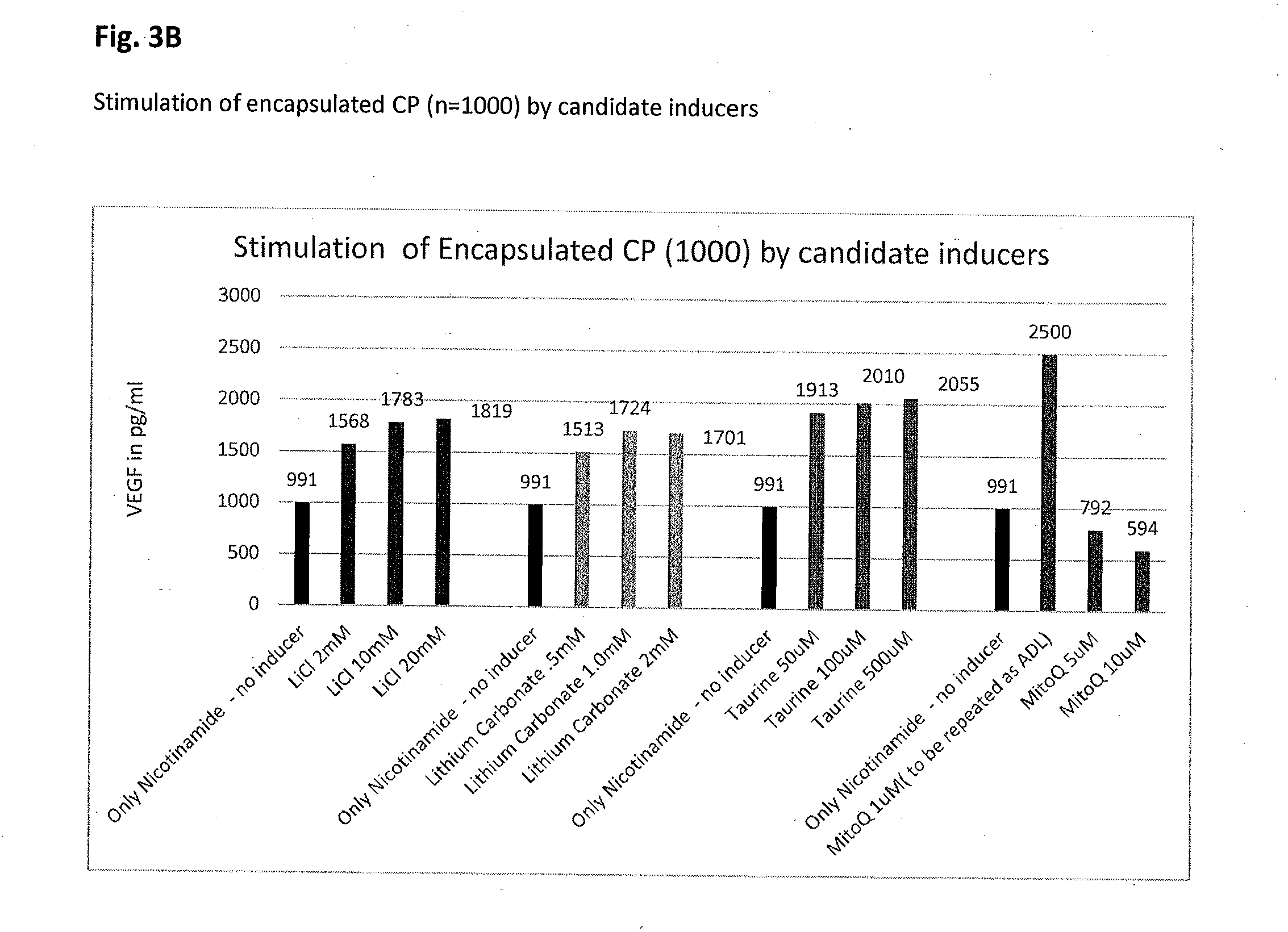Treatment of CNS disease with encapsulated inducible choroid plexus cells
a technology of choroid plexus and encapsulated choroid, which is applied in the field of neurological diseases and disorders, can solve the problems of affecting the function of the nervous system, social and economic challenges for which effective remedies remain elusive, and affecting the treatment effect, and achieving the effects of reducing the number of patients
- Summary
- Abstract
- Description
- Claims
- Application Information
AI Technical Summary
Benefits of technology
Problems solved by technology
Method used
Image
Examples
example 1
Selection of Choroid Plexus (CP) Cell-Containing Capsules for Elevated Cerebrospinal Fluid (CSF) Production
[0132]This example describes selection of CP cell-containing capsules for elevated CSF production using the CSF component VEGF as a representative indicator of CSF production.
[0133]Neonatal porcine choroid plexus tissue was processed and encapsulated in alginate capsules essentially as described in US2009 / 0047325 and US2009 / 0214660. Briefly, CP tissue was sterilely dissected from neonatal pig brains, finely chopped with scissors, digested with collagenase and thermolysin, and passed through a 550 μm stainless steel filter, pelleted and gently resuspended to obtain tissue fragments comprising cell clusters of about 50-200 μm in diameter. CP cell clusters were separated from blood cells by unit gravity sedimentation twice for 40 minutes at room temperature. The settled CP cells were resuspended in RPMI medium / 2% neonatal porcine serum at a density of approximately 3,000 clusters ...
example 2
Identification of a Choroid Plexus Inducing Agent
[0137]This example describes the identification of an agent that induces mammalian choroid plexus (CP) cells to produce a CSF component at a level that is greater than the level at which CP cells produce the CSF component in the absence of the inducing agent. CSF is known to contain multiple components that function as antioxidants (e.g., Kolmakova et al., 2010 Neurochem. J. 4:41); collectively the antioxidant properties of these components may be referred to as the total antioxidant capacity (TAC).
[0138]Choroid plexus (CP) cell clusters comprising CP cells (5×103 clusters / mL) were prepared as described above in Example 1 but without encapsulation and cultured at 37° C. in a 5% CO2 incubator for 24 or 72 hours in vitro in 24-well ultra-low (cell) attachment plates, and culture supernatants were tested for total antioxidant capacity (TAC) using the OxiSelect™ TAC assay (Cat. No. STA-360, Cell Biolabs, Inc., San Diego, Calif.) according...
example 3
Long-Term In Vivo Survival of CNS-Implanted Encapsulated Xenogeneic Choroid Plexus (CP) Cells Without Immunosuppressive Regimen
[0143]Alginate-encapsulated neonatal porcine choroid plexus (CP) clusters comprising 200 to 10,000 CP cells per capsule were prepared as described above and in US2009 / 0047325 and US2009 / 0214660. Capsules (10 per recipient) were surgically implanted into the striatum of multiple anesthetized Sprague-Dawley rats using a catheter designed for rodent brain implantation. Animals were maintained for 1-16 months (for initial experiments, monthly time points were collected starting at one month; subsequent experiments provided confirmatory data starting at 12 months) and at each monthly interval sample animals were humanely sacrificed for histological examination of post-mortem brains. No anti-inflammatory or immunosuppressive treatments were administered.
[0144]Histological findings indicated that at each time point for sacrifice (9, 12 or 16 months), living cells w...
PUM
| Property | Measurement | Unit |
|---|---|---|
| diameter | aaaaa | aaaaa |
| diameter | aaaaa | aaaaa |
| volume | aaaaa | aaaaa |
Abstract
Description
Claims
Application Information
 Login to View More
Login to View More - R&D
- Intellectual Property
- Life Sciences
- Materials
- Tech Scout
- Unparalleled Data Quality
- Higher Quality Content
- 60% Fewer Hallucinations
Browse by: Latest US Patents, China's latest patents, Technical Efficacy Thesaurus, Application Domain, Technology Topic, Popular Technical Reports.
© 2025 PatSnap. All rights reserved.Legal|Privacy policy|Modern Slavery Act Transparency Statement|Sitemap|About US| Contact US: help@patsnap.com



